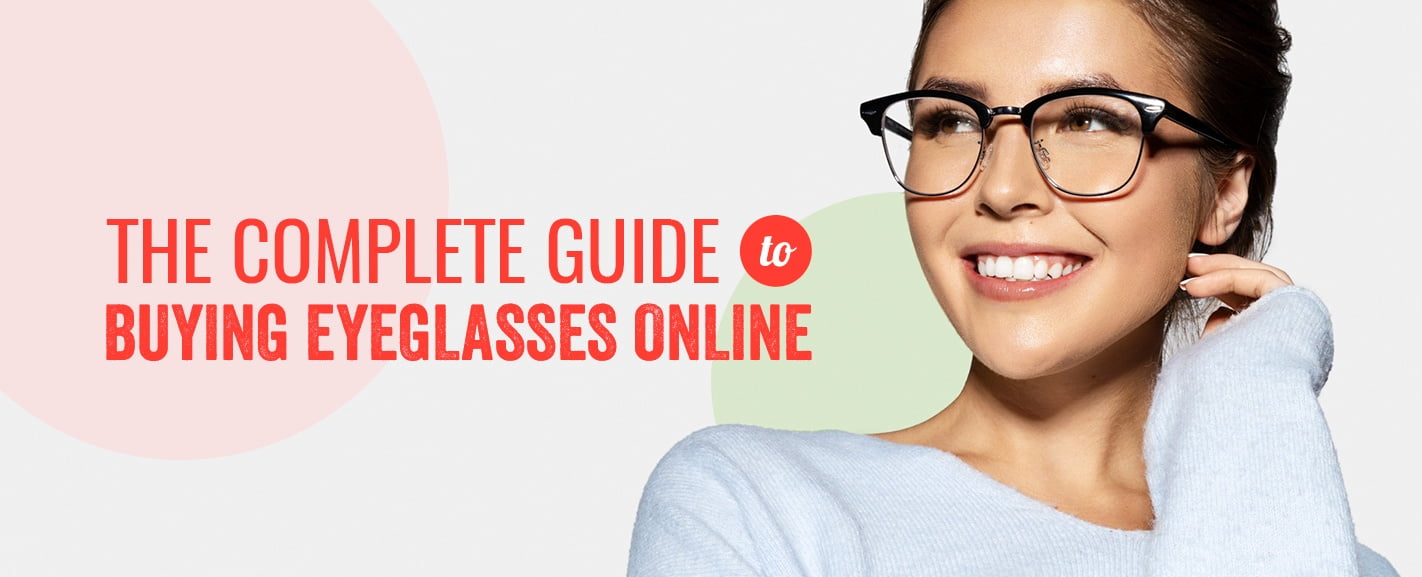
New eyeglasses provide a great way to change up your look and keep your prescription up-to-date. Buying glasses online allows you to choose an option you love from the comfort of your home. The selection and customization process is completely in your hands when you order eyeglasses online, which means you’ll need a few pieces of important information. Here are a few tips to help you pick glasses that fit your face shape, correct your vision, and complement your style.
Why Should I Buy Eyeglasses Online?
Buying glasses online offers several advantages, including:
- It’s convenient: When you shop at an eye doctor’s office or brick and mortar store, you have to schedule an appointment and take time out of your day. You may also feel pressured to make a decision quickly as someone watches you test out different frames. Shopping online provides the opposite experience. You can browse styles from your desk over a lunch break, in bed wearing pajamas, or in front of the television with squirming toddlers. Online eyeglasses shopping gives you as much time as you need to make a decision you love without ever leaving the house.
- It expands your options: Physical stores and offices have limited space for the number of frames they can display, which prevents them from offering as many styles and options. Online eyeglasses retailers don’t have these restrictions and can stock up on all the trendy styles. When you shop online, you don’t have to settle for frames that almost fit your style — you can find the pair you truly want.
- It saves time and money: You’ve got a life, and your schedule doesn’t clear when you need new glasses. Buying eyeglasses online allows you to shop when it’s convenient without the need for an appointment. It also saves you money. Without traditional brick and mortar retail costs, online sellers can give customers the best prices possible. You may be able to buy multiple pairs of glasses online for the price of a single pair at your eye doctor. With that kind of savings, you can give yourself different glasses options to wear throughout the week!
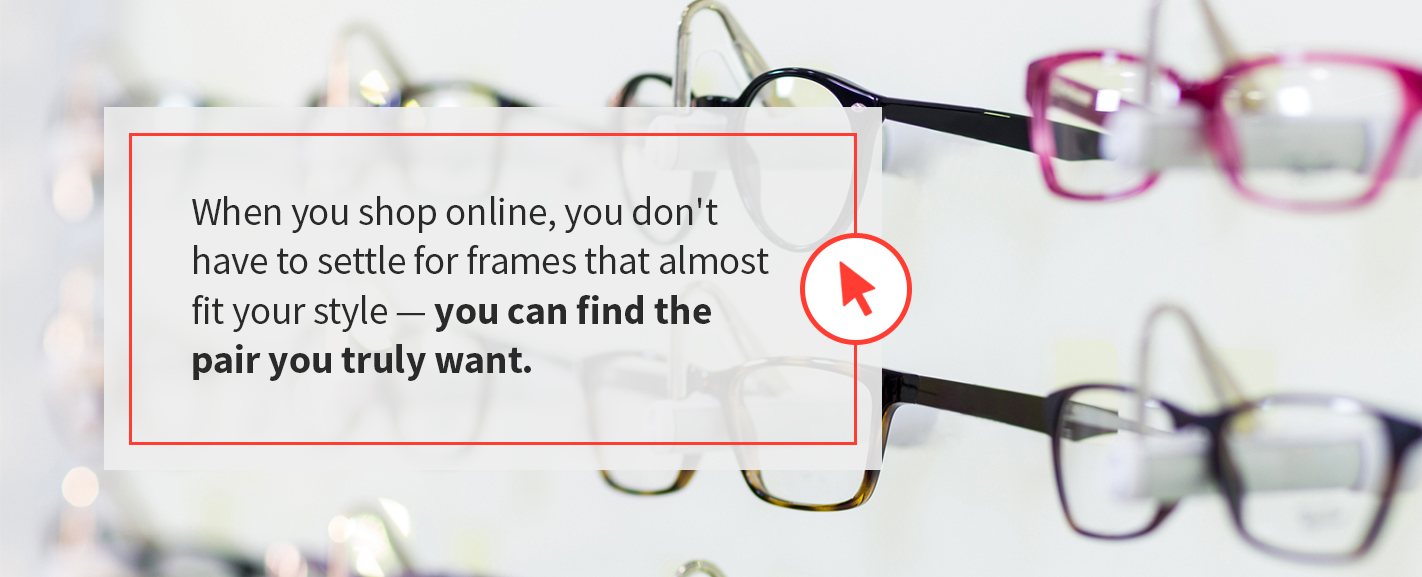
What Do I Need Before I Purchase Prescription Glasses?
Before you click “add to cart” on the styles you’re eyeing, you’ll need to gather some relevant information. You may need to make a quick call to your optician, but rounding up your prescription and measuring your pupillary distance shouldn’t take too long.
1. Your Prescription Information
To buy eyeglasses online with a prescription, you’ll need to secure a copy of your prescription information. The Federal Trade Commission (FTC) requires eye doctors to give you your prescription without an extra fee. For optimal results, you’ll need to make sure your prescription is up-to-date.
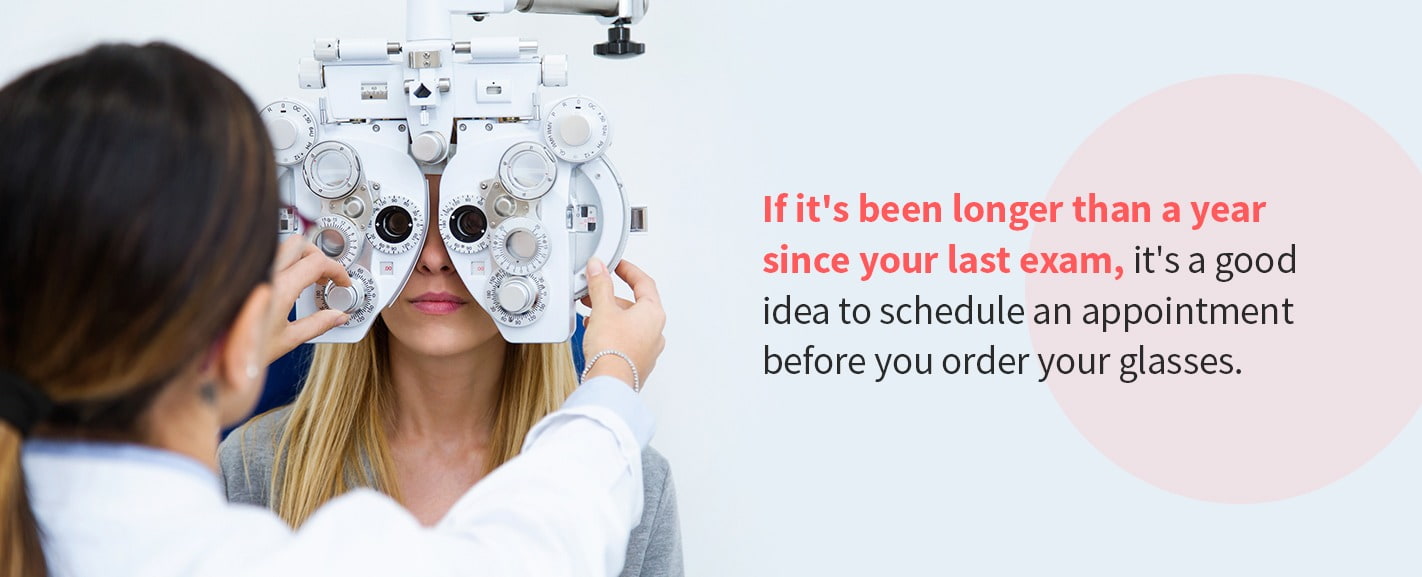
Each state has different rules for how long an eyeglasses prescription can be used. In general, your prescription may be good for a year or two. If you’ve had an eye exam in the past year, you can call your eye doctor to get a copy of the information. If it’s been longer than a year since your last exam, it’s a good idea to schedule an appointment before you order your glasses.
When you have a copy of your prescription, there are few key measurements you’ll need to look for:
- Right and left sphere: The first number in your prescription is usually the spherical refractive error that determines how nearsighted or farsighted you are, and is abbreviated as SPH. Commonly you will find either a positive or negative sign in front of your sphere value, but you may also see a PLANO, which indicates 0.00. It’s crucial to input that sign and the number correctly to ensure your prescription glasses are the right strength.
- Right and left cylinder: If you have astigmatism, the second number in your prescription will be a positive or negative cylinder value, abbreviated as CYL. Your prescription may have the letters DS or SPH if you do not have astigmatism. If this is the case, simply mark this value as zero when you order.
- Right and left axis: If you have astigmatism, the last number in your prescription will be an axis value. This number indicates the direction of your astigmatism.
- Prism correction: Prism numbers are used to treat muscular imbalance or other eye conditions. Most people do not need prism corrections, but if you do, it’s important to include these numbers when you order your glasses.
- ADD value: Prescriptions for bifocal, progressive, and reading glasses may include an ADD power number which is used for added magnifying power applied to the bottom part of lenses and is always denoted by a plus (+) sign.
2. Your Pupillary Distance
In addition to your prescription information, you’ll need to know your pupillary distance (PD). This number measures the distance between the center of one pupil to the center of your other pupil. Your PD helps to ensure your eyeglass frames are centered over your eyes, which is helpful for both fit and proper function as it ensures the prescription is located in the proper location of the lenses.
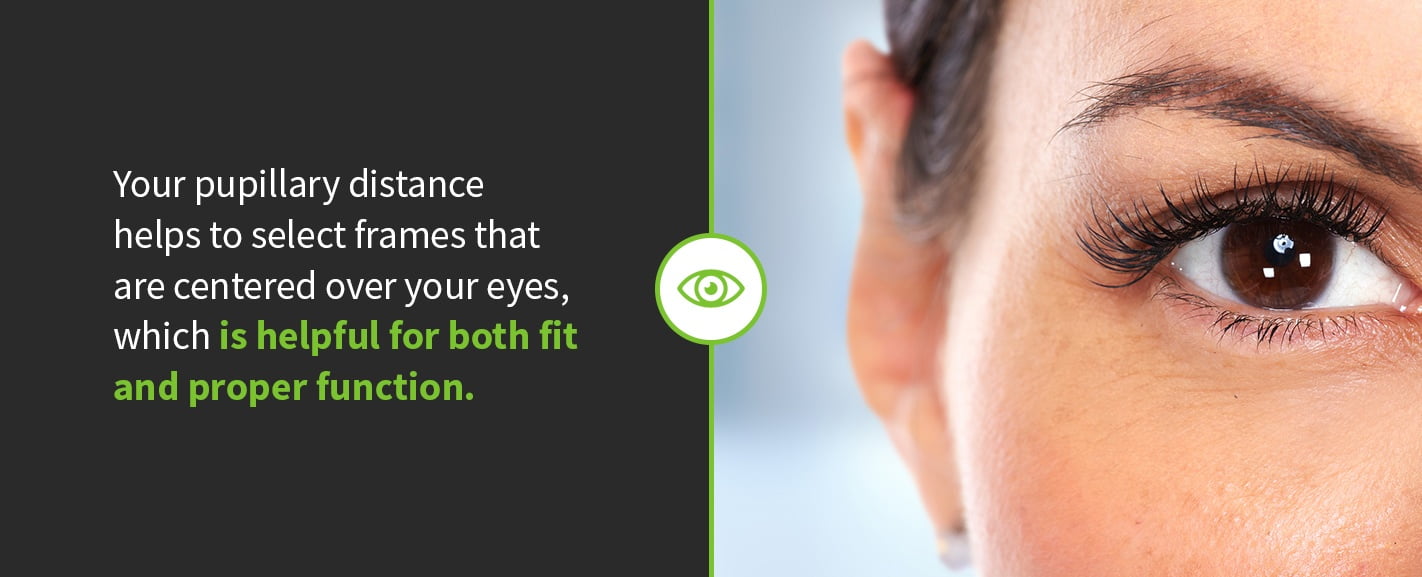
A PD value isn’t always included in your prescription information. When you pick up your prescription, you may want to ask your optician if there is a PD listed. If not, it takes just a few minutes to have them measure it for you. You can also complete this measurement at home by yourself or with the help of a friend.
Follow these steps to measure your PD yourself:
- Stand 8 inches from a mirror for the most accurate measurement.
- Place a ruler with millimeter markings across your eyebrows and close your left eye.
- Line up the end of the ruler with the center of your right pupil, and then close your right eye.
- Open your left eye, align the ruler to the middle of your left pupil and note where the measurement ends.
- Remeasure this distance several times to make sure you are getting an accurate number.
If you have a friend measure, you can follow the same steps. Have your friend crouch down and try to find a focus point over their head. You’ll want to keep your eyes as still as possible without looking directly at the person who is measuring.
However you get your PD, make sure the measurement is as accurate as possible — especially if you’re ordering bifocals or progressive lenses.
3. Your Lens Thickness Preference
Most online eyeglasses retailers offer different prescription index options that allow you to adjust the thickness of your lenses. The higher the prescription index number, the thinner the lenses.
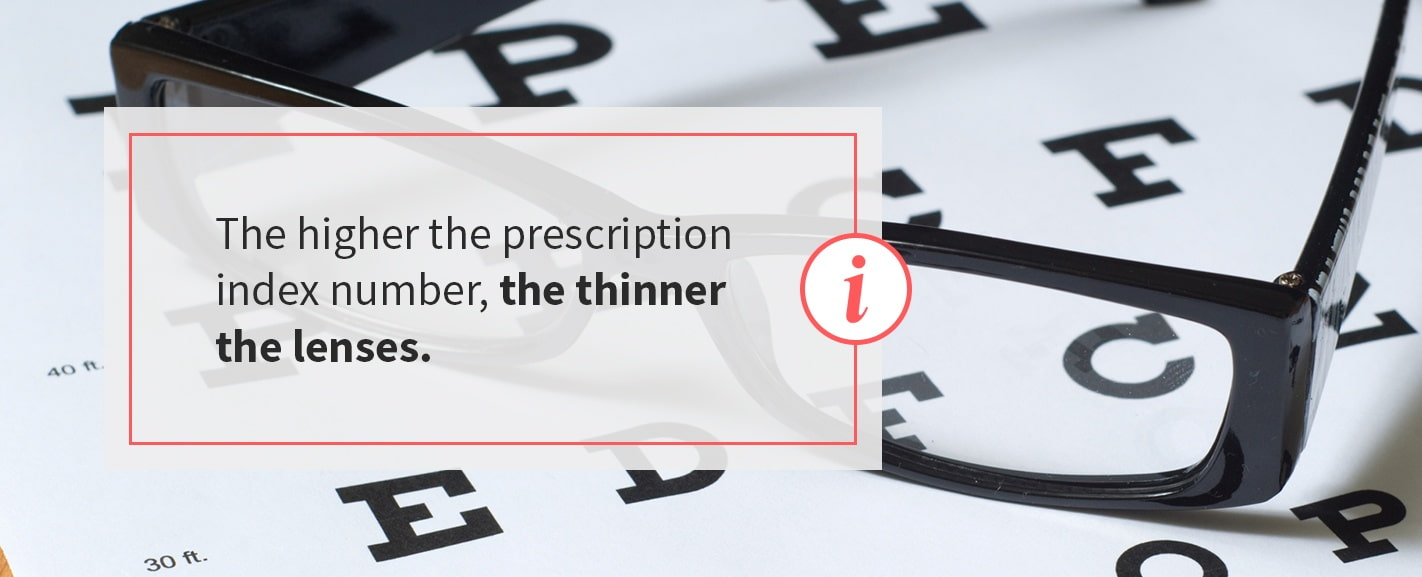
Each retailer has a standard index number that comes with their eyeglasses. Standard index numbers generally range from 150 to 156 — or 1.50 to 1.56. You can choose to upgrade to a higher index number if it makes sense for your prescription.
You may want to consider adding a higher index value if you fall into the following prescription ranges:
- 1.56 index: This is considered a thin lens and is a good idea for those with a sphere value between positive or negative 3.75 to 4.50.
- 1.59 index: This is considered a super thin and light lens. If your sphere value is between positive and negative 4.75 and 6.50 and you want your eyeglasses to feel light, this is a great option.
- 1.67 index: This is considered an ultra-thin lens and may be appropriate for those with sphere values of positive or negative 6.75 to 8.50.
- 1.74 index: This is considered a micro-thin lens and may work well for sphere values of at least positive or negative 8.75.
Additional Considerations for Your Online Eyeglasses Purchase
Beyond your technical prescription information, the types of lenses you choose and your frame sizes are important to get the fit you want. Think about what you need in each of these categories to help narrow your search.
Determine the Type of Lenses
Online retailers offer several different lens types to meet different vision needs, including:
- Single vision: These lenses are the most common and have one corrective power. You may need single vision lenses if you are nearsighted, farsighted, or use reading glasses.
- Progressive: A progressive lens has multi-focal lenses without a visible line to separate them. If you need different lens areas for your distance, intermediate and near-vision, these lenses can help you see without obstructing your vision with divider lines.
- Bifocal: A bifocal lens has multiple focus points with a line to separate them. These lenses combine single vision and reading glasses into one, which may make sense for those who need to switch back and forth often.
- Fashion only: Fashion lenses allow you to wear trendy eyeglasses without the need for a prescription. If you want to add glasses to your accessory line-up, these lenses may be right for you.
You can pair these lens types with different lens materials, depending on your needs.
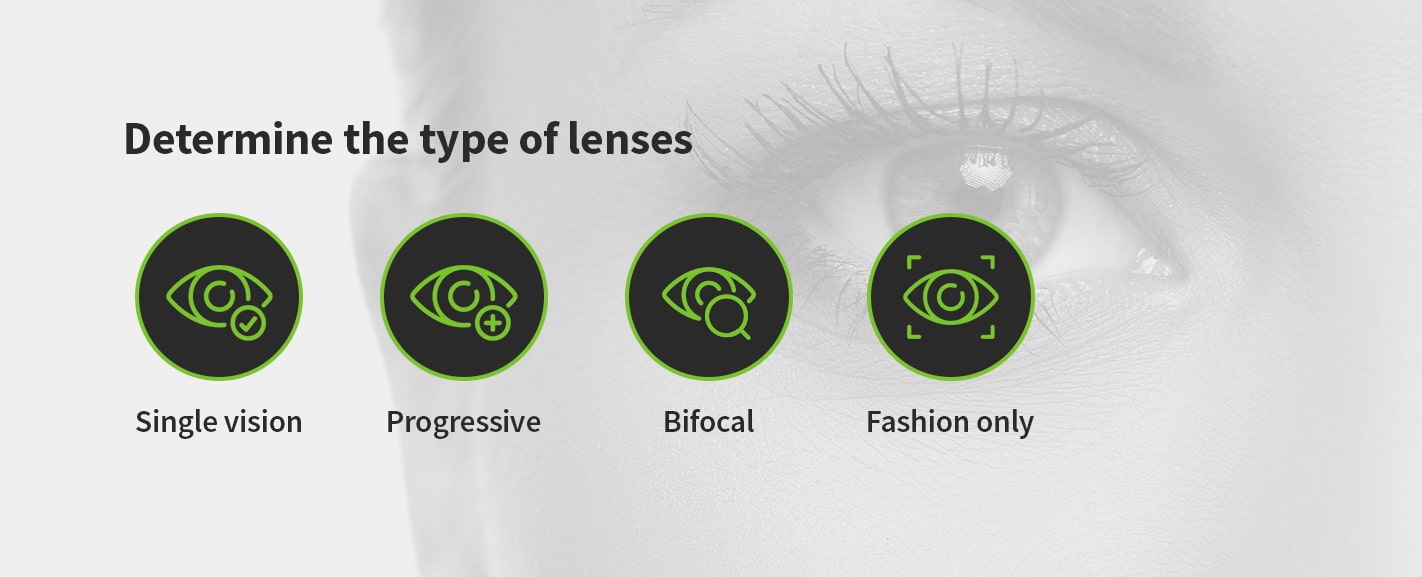
Online glasses retailers may offer thin plastic lenses as a standard with the option to upgrade to a polycarbonate lens. Plastic lenses are extremely lightweight and tend to have lower costs. Polycarbonate lenses are more durable, which may be better for young kids or athletes.
Determine Your Frame Size
Selecting the right frame size helps to ensure the eyeglasses fit well and feel comfortable on your face. The main measurements you’ll need include:
- Lens width: This is the length in millimeters of the horizontal distance across the middle of one lens. Lens width helps to determine how big the frames look on your face.
- Bridge width: This is the length in millimeters of the horizontal distance across the piece that sits on your nose. Bridge width plays a role in how the glasses are situated on your nose, whether the frames have nose pads or not.
- Temple length: This is the length in millimeters of the piece that extends backward behind your ear. Temple length helps to determine if the arms of your glasses are the right size for your head.
- Frame width: This is the length in millimeters of the total distance across the front of the eyeglasses. Frame width helps to determine how large a pair of glasses look on your face.
If you have existing frames that fit well, you can find many of these numbers printed inside the arm. The first number you see is the lens width. There may be a small square after this figure, and then you’ll see the bridge width. You may see a dash, and then the temple length will be listed.
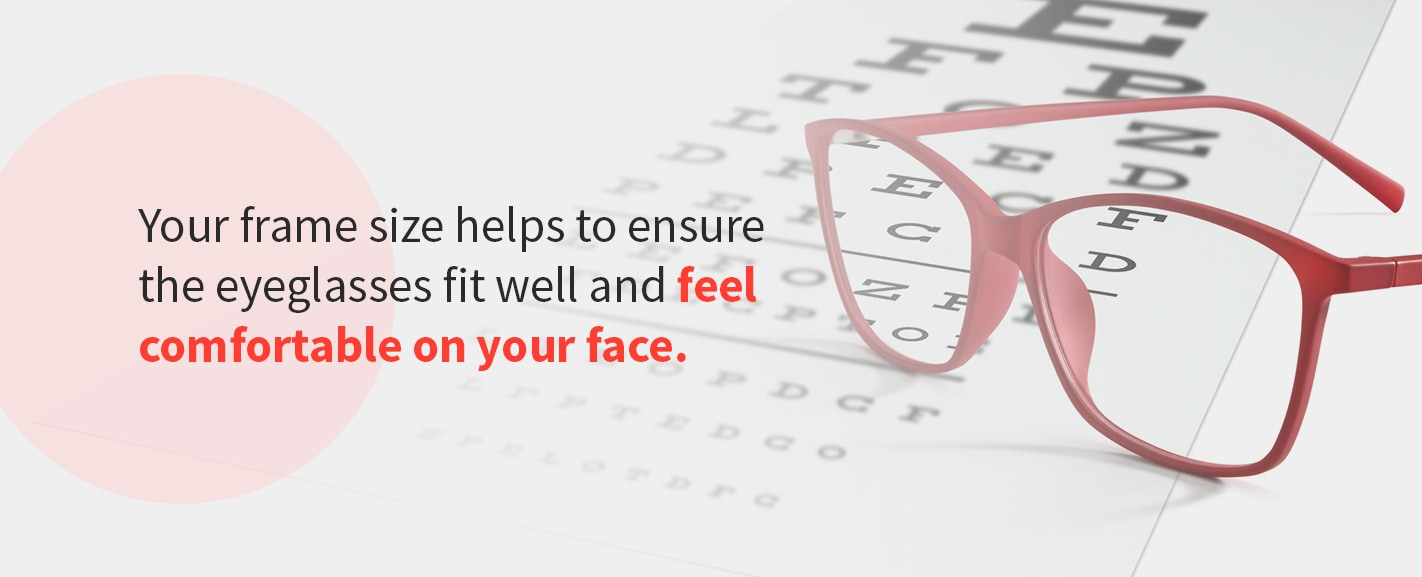
If you don’t have existing frames, consider the following lens size categories:
- Extra Small: 89 to 119 millimeters
- Small: 120 to 125 millimeters
- Medium: 126 to 135 millimeters
- Large: 136 millimeters and above
In general, you have about a 2- to 3-millimeter margin on most of your frame measurements. However, you’ll want to stick to a 2-millimeter gap on your bridge measurements. Refining your eyeglasses selection with frame measurement is crucial to getting the right fit. The more you align your glasses to proper measurements, the better you’ll feel when you slip the pair on for the first time.
Aesthetic Considerations for Your Online Eyeglasses Purchase
Perhaps the most fun part of shopping for glasses is picking out a style you love. You could probably spend hours scrolling through all the different options, and we wouldn’t blame you if you did! Taking your face shape into consideration can help give you a starting point for your search. Once you find that perfect pair, you can customize it to perfection with the lens tint of your choice.
Your Face Shape
If you’re looking for a place to begin amid a sea of frame choices, think about what styles may complement your face shape. The following are a few of the different face shapes and the styles with which they pair well:
- Oval: Individuals with oval-shaped faces have high, slightly wide cheekbones that narrow into a longer forehead. This shape pairs well with almost any glasses style, especially oversized and wide frames. You may also consider rectangular, square, round or cat-eye glasses to complement your face.
- Square: Those with a square-shaped face are widest at the jaw and forehead. These individuals tend to have a strong, defined jawline as well. If you have a square face, you can use your glasses to soften your features. Oval, round or browline styles work well when juxtaposed with an angular square shape.
- Round: If you have a round face shape, your forehead, chin and cheek proportions are roughly equal in width and length. In contrast to square face shapes, round faces can use glasses to add sharp angles and definition. Opt for a rectangle, square or cat-eye style to add different shapes to the mix.
- Heart: People with heart-shaped faces have wider foreheads paired with a narrow chin and high cheekbones. This shape works well with a variety of styles, including rectangle, oval, and cat-eye.
- Diamond: Diamond-shaped faces are the least common. They feature full cheeks accompanied by a narrow forehead and jawline. If you have a diamond-shaped face, you can add unique shapes to your face with rectangular, oval, or cat-eye frames.
Many online eyeglasses websites have a tool that allows you to “try on” a frame style before purchasing. You can upload a photo of yourself and see what the glasses will look like, or you can choose a model with a similar face shape. Either way, you can get a sense of how the frames will interact with your hair color and features.
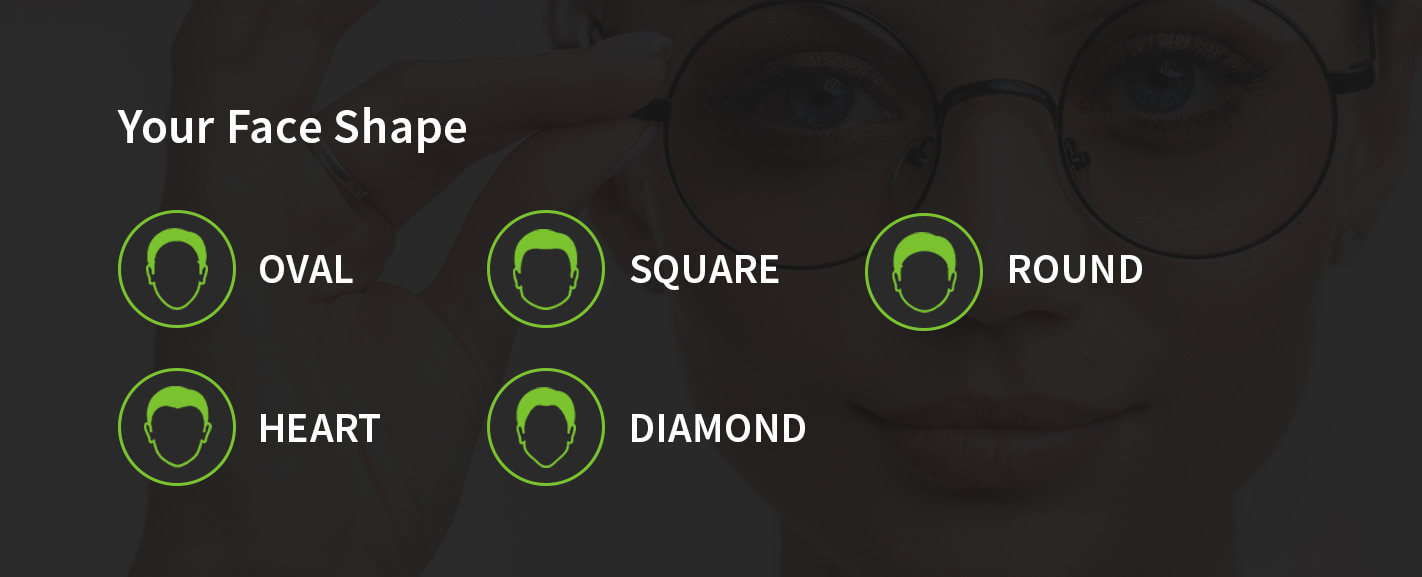
Though face shape can be helpful, the most important consideration is that you feel confident in your new eyeglasses. If you prefer a style, don’t be afraid to try it out! Your unique tastes are part of what makes your style undeniably your own. Explore without boundaries to find a pair of glasses that express your style.
Different Tint Types
To make your purchase extra special, you may want to customize your glasses with a tint. Solid-colored tints are one of the most common options. Many online retailers offer a variety of color options that provide different benefits:
- Red or pink: These tints can help improve depth perception, contrast adjustment, and road visibility. If you are competing in fast-paced sports or doing activities that require careful footing, a red or pink tint could help improve your vision.
- Yellow: A yellow tint adds contrast to indoor or outdoor environments as well as additional sharpness. When you need precision, a yellow tint can be a great choice.
- Green: Green tints help to reduce glare, brighten shadows and increase sharpness in your vision. These characteristics make green a great choice for low-light conditions.
- Blue: A blue tint can enhance color perception and reduce glare. Blue may also have a calming effect on anxiety or other visual stressors.
- Purple: This tint provides contrast against green backgrounds and balances color perception, which makes it a great choice for golfers.
- Brown: A brown tint enhances overall contrast and adds warmth to your vision. You can use this tint for sunglasses if you don’t mind slight color distortion.
- Gray: Gray tints offer true-to-life color perception that also protects your eyes from glare and fatigue. This is a common choice for sunglasses.
Aside from vision benefits, solid-colored tints are great for making a fashion statement. Choosing light tint can be a great way to add a signature flair to your eyeglasses.
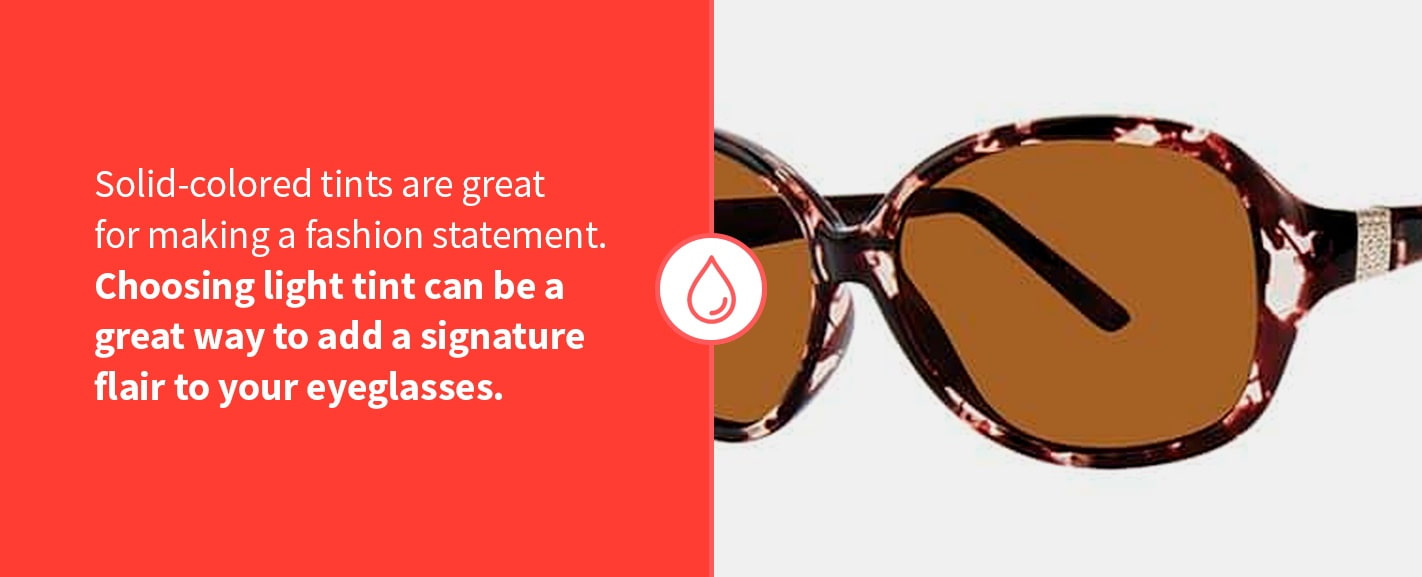
Other common tint types online retailers offer include:
- Gradient: A gradient tint features one color that is dark at the top of the lens and gradually lightens toward the bottom of the lens. Much like solid-colored tints, a gradient may come in a wide range of colors. You can also use a gradient lens for sunglasses if the tint is dark enough.
- Polarized: A polarized lens has a special chemical applied that helps to filter bright rays of light. These lenses are great for conditions that involve high sun glare, like skiing or fishing.
- Mirrored: Mirrored lenses have a thin reflective coating that makes the outward-facing portion of the lens look like a mirror.
Each retailer offers different color choices for their tints, but some of the most common options include:
- Solid and gradient colors: You may be able to pick between a light and medium tint level to reach your desired color intensity. Color options typically include red, yellow, green, blue, purple, pink, brown and gray.
- Mirrored colors: You may be able to choose from black, blue, gold or silver mirror colors.
- Polarized colors: Polarized lenses may come in gray-green, brown, gray or more.
Blue Light Blocking Coating
A blue light blocking lens works with or without a prescription to help prevent eye strain from looking at digital screens. If you work with technology for most of the day, adding a blue light coating to your lenses can help mitigate the effects of blue wavelengths from electronic devices. If you find yourself in front of digital screens on a regular basis, consider adding this type of coating when customizing your eyeglasses to reduce eye strain.
Find the Perfect Frames at Great Eye Glasses
Who said high-quality eyeglasses have to come with a high price? At Great Eye Glasses, we pride ourselves on providing glasses for the whole family with both styles and prices you’ll love. If you’re looking for trendy new men’s, women’s or kid’s frames, you’ll love our wide selection. With our affordable prices, you can try out different trends and give yourself options throughout the week.
When you order from Great Eye Glasses, your glasses can be ready and shipped as soon as within 14 days of your order date. Your stylish new pair will come directly to your door, so you can wear your glasses sooner without ever leaving the house. For amazing deals on the latest trends, shop our new arrivals today!

